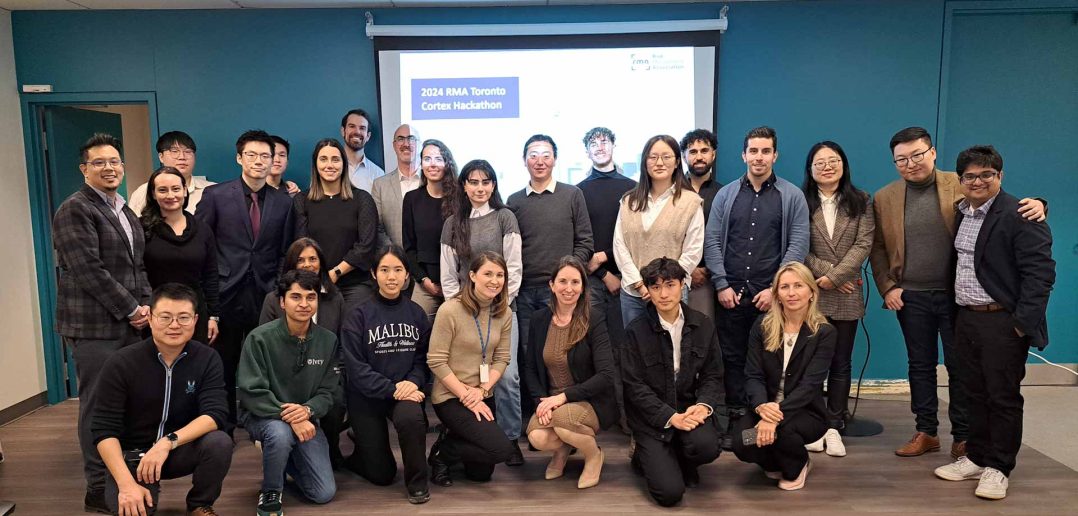Careers in risk management can be rewarding. The disciplines are key to a broad range of industries. Risk management teases the analytical side of the brain and there is a clear line of contribution between the work and the organization's performance.
Careers in risk management are also shrouded in mystery to next-generation talent. What do you actually do? What tools do you use, mental and technological, to do it well?
“I am very interested in working in the risk space,” said Yanda Li, a Master of Financial Mathematics Student at McMaster University's DeGroote School of Business in Hamilton, Ont. Market and credit risk management are a big part of her studies, and she feels there is a rewarding career in the field. However, she was hesitant when her program's career development manager suggested she participate in a one-day risk-management hackathon hosted by the Toronto Risk Management Association and SAS Canada.
“At the time, I did not have much experience with the SAS software and application,” she said. However, after some discussion with classmate Saba Mehrabbeigi, the two decided to join the competition driven by Cortex, an analytics simulation engine developed by the business school HEC Montreal. They saw it as an opportunity to learn from and network with industry mentors who volunteered their time.
Li and Mehrabbeigi were crowned champions in the real-time simulation at Jarvis Consulting Group's offices in the heart of Toronto's financial district.
Learning through gamification
This particular Cortex game featured several teams competing to bring the best credit return to a fictional financial services institution based on demographics, financial indicators, historical loan information and other credit-related metrics. Teams used SAS Viya software as an analytical sandbox to develop models, with the added incentive of a real-time leaderboard tracking competitive progress.
The Cortex gamification approach has caught on not just in the context of academic competition but also as an onboarding tool for companies, said Jean-François Plante, professor at HEC and co-creator of Cortex. The simulations are used by hundreds of players worldwide each year in geographies as far afield as Thailand, Malaysia, Australia and Finland. Plante said that gamification has been scientifically shown to improve users' learning, retention and task confidence.
Cortex is set up to deliver results from experimentation almost immediately, Plante said. The leaderboard quickly becomes the star, driving innate competitive instinct and creating high-stakes drama.
Joseph Gillis's team was in first place at the midpoint of the competition and not by a small margin. Gillis, from Toronto Metropolitan University, worked with Yifan Wang from Ivey Business School at Western University in London, Ont., and Lingyu Wang from McMaster.
“We were surprised to learn we were leading at the halfway point by $100 million as we were still working through experimenting with the models and data,” Gillis said. It was too late, and the team realized it was still using practice data—it still hadn't switched to live scenario data. He said the TMU team slipped in the rankings but was “very proud” to regain third place after swapping data so late in the game.
Some teams brought other innovative techniques and technologies to the table.
“We utilized ChatGPT during the research to better narrow down the scope of our candidates, such as asking for the best ratio for including people's income, age, etc.,” said Donald Shi, a first-year student from the University of Waterloo.
An indispensable networking opportunity
The hackathon also offered a chance for students to network with and learn from prospective employers in the form of volunteer industry mentors assigned to the teams, an opportunity enthusiastically embraced.
“It was a great event, with awesome industry mentors who shared their risk knowledge,” said Gillis. “Our mentor, Ben Yu [from Scotiabank], was very relatable and friendly. He made it easy to understand how to evaluate the customer’s creditworthiness.”
“It was an amazing social networking event, intertwined with the opportunity to get our hands on the SAS Viya platform,” said Shi. “The best part of the day for me was talking to all the field experts to learn more about risk management, especially credit risks.”
Networking wasn't a one-way street. Mentor Cathy Han from Scotiabank was impressed by the calibre of the students and how quickly they picked up the various modelling tools and homed in on the relevant data to predict creditworthiness—especially given her charges were first-year computer science students, not business students. While she schooled them on risk, she also picked up new ways of using analytical tools.
“The field of risk management is often overlooked until a crisis brings it to the forefront,” said Anne-Marie Bourgeois, RMA Board Director and Mentorship Chair. As a board member of the Toronto Chapter of the RMA, Bourgeois leads several member engagement programs including the Mentorship Program and related programs that connect industry professionals with students.
Bourgeois has over 20 years of progressive experience in leadership roles focused on the management of financial and non-financial risks and is currently the Director of Operational Risk Oversight for the Canadian Banking and Global Wealth Management businesses at Scotiabank.
“Events like this can empower the next generation of students with the tools and knowledge to assess risks so they can build resilient products and services when they join the workforce.”
- Learn more about SAS customers in risk management!
- Interested in learning more about how SAS can support educators and learners? Visit our Global Academic Programs page or reach out to Bryan Mehi, Sr Global Academic Program Manager (bryan.mehi@sas.com)
- Want to learn more about the field of risk management? Join the Risk Management Association today by applying for a free student membership.
With contributions from Anne-Marie Bourgeois

